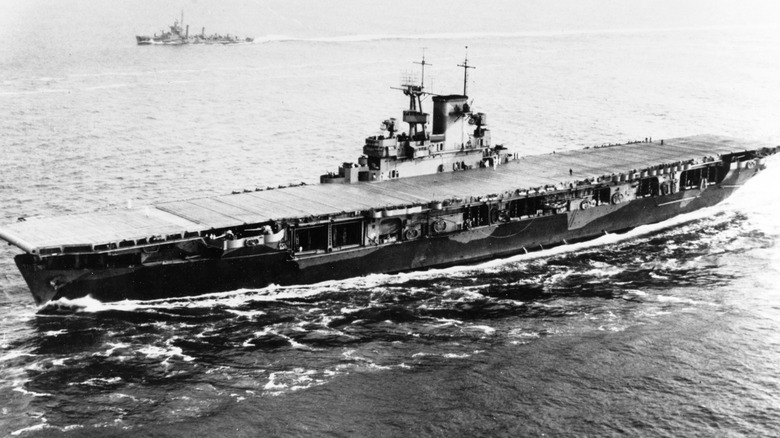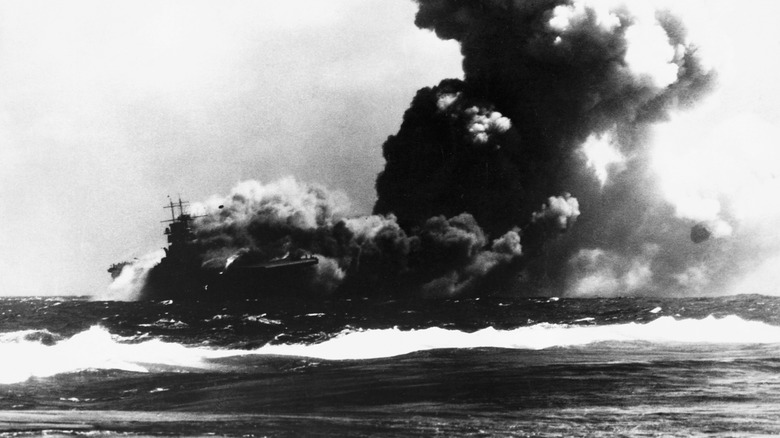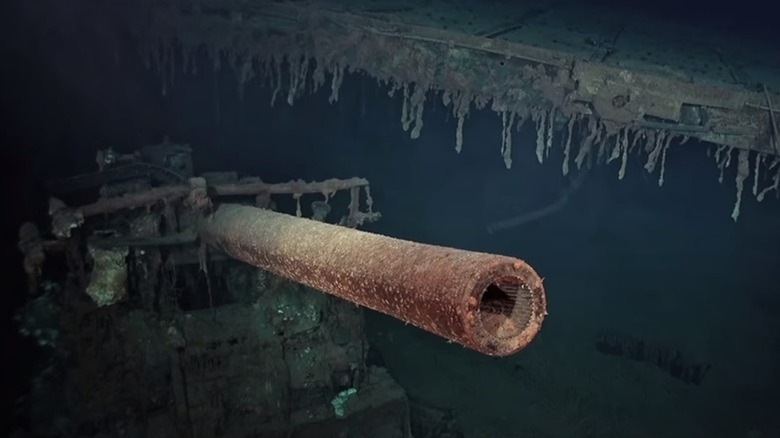
Wikimedia Commons
The USS Wasp (CV-7)entered service in 1940. It was a Yorktown-class aircraft carrier and was stationed in the Atlantic Ocean at the onset of America’s engagement in World War II. While supporting operations in the Atlantic, the Wasp took part in the occupation of Iceland in 1941, and the following year, she deployed with the British Home Fleet.
At the beginning of the war, the Wasp functioned as a ferry, taking fighter aircraft from Britain to Malta. When the U.S. formally entered WWII, the Wasp was transferred to the Pacific, which had just lost most of its fleet during the sneak attack at Pearl Harbor, Hawaii. The Wasp was meant to shore up the losses from Pearl Harbor and the battles at Midway and the Coral Sea before leaving to support the invasion of Guadalcanal.
It was during this operation that the Wasp and her crew met their ends. On Sept. 15, 1942, a Japanese submarine fired three torpedoes at the Wasp, causing insurmountable damage to the deck, power plant, and other vital areas. As a result of the damage, the destroyer USS Lansdowne scuttled the Wasp where she floated, sending her into the briny deep. Unfortunately, the wreck was lost and not discovered until Jan. 14, 2019 — 77 years after it sank.
[Featured image by U.S. Navy via Wikimedia Commons | Cropped and scaled | Public Domain]
What brought down the USS Wasp

Historical/Getty Images
During the invasion of Guadalcanal, the USS Wasp became the target of the Japanese submarine I-19. During the fight, the I-19 fired off three torpedoes that hit the vessel, causing explosions. These set off secondary explosions from the gasoline tanks and the ship’s magazines, causing munitions to pop off and explode. The damage made it impossible to pump water and try and drown the fires.
This left the crew with few options, so Capt. Forrest Sherman ordered his men to abandon ship. It took nearly an hour for everyone to leave the vessel with Sherman departing last. The destroyers operating in the area were able to keep I-19 busy while rescue operations commenced, and many of the men who survived the initial attack ultimately survived the Wasp’s sinking.
Unfortunately, 25 officers and 150 others died. The USS Lansdowne sent the Wasp into the deep, and she was lost for nearly a century. As it happens, the I-19 didn’t torment U.S. vessels for too much longer, as it was sunk by the USS Radford (DD-416) on November 25, 1943, though she damaged several ships alongside the Wasp on Sept. 15.
Finding the USS Wasp

RV Petrel/YouTube
When a ship sinks, it’s not always clear where it will land on the ocean floor. This is due to a number of factors, including the movement of the water, the depth of the wreck, and the passage of time. Finding a shipwreck can be incredibly challenging, and the USS Wasp’s final resting place remained a mystery until a research team found it in January 2019.
The team found the Wasp nearly 14,000 feet below the surface of the ocean via unmanned submersible. It found the wreck with the R/V Petrel, which is a research and exploration vessel used to find shipwrecks of historical significance, and the USS Wasp certainly meets that description. The Wasp is hardly the Petrel’s only find, having located the USS Lexington (CV-2), USS Juneau (CL-52), USS Helena (CL-50), USS Hornet (CV-8), and the Japanese ship IJN Hiei.
When the research team announced its findings in March of 2019, it released several photographs of the wreck. It’s in surprisingly good condition, having been submerged 14,000 feet below the surface for nearly 80 years. The wreck revealed several aircraft, the ship’s guns, and other features that stood the test of time.